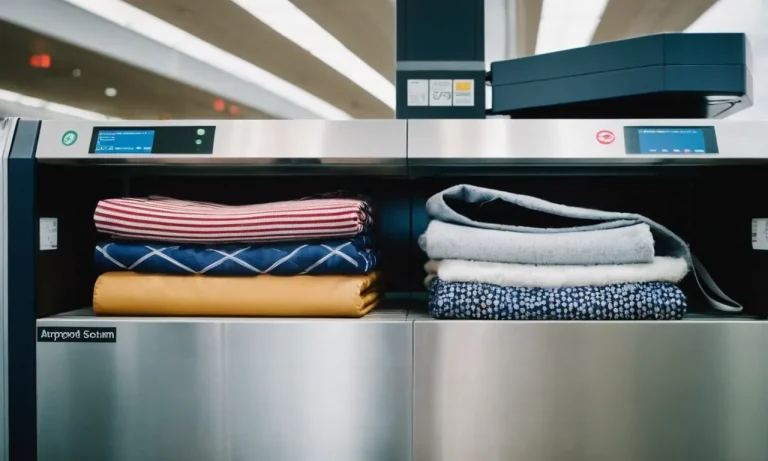Planning a road trip across the border? Renting a car in Canada as a US resident is easy but there are some important rules and requirements to know.
This comprehensive guide will walk you through everything you need to rent a car in Canada, including required documents, insurance information, driving permit validity, rental age requirements, and tips to get the best deals.
If you’re short on time, here’s a quick answer: US residents can rent a car in Canada but will need a valid driver’s license, passport or enhanced license for ID, and potentially an International Driving Permit. Make sure your car insurance covers you abroad or consider rental insurance.
Documents Needed to Rent a Car in Canada
When renting a car in Canada as a US resident, there are certain documents you will need to provide. These documents are necessary to ensure that you meet the requirements set by rental car companies and Canadian regulations.
Let’s take a look at the essential documents you’ll need:
1. Valid US driver’s license
The most important document you will need to rent a car in Canada is a valid US driver’s license. This license should be in good standing and valid for the entire duration of your rental period.
Rental car companies will require you to present your driver’s license at the time of pickup, so make sure to have it with you.
2. US passport or enhanced license
In addition to your driver’s license, you will also need to provide a valid form of identification. This can be your US passport or an enhanced driver’s license.
The enhanced license is a state-issued license that can be used for both driving and identification purposes.
It has a specific marking to indicate its enhanced status. Having either of these documents will help establish your identity when renting a car.
3. Potentially an International Driving Permit (IDP)
While not always required, it is recommended to obtain an International Driving Permit (IDP) before traveling to Canada.
This permit acts as a translation of your driver’s license and can be useful in case there are any language barriers or if you encounter a situation where it is specifically requested.
Some rental car companies may require an IDP, so it’s best to check with the company you plan to rent from beforehand.
Pro Tip: It’s important to research and understand the specific requirements of the rental car company you choose to ensure a smooth rental process.
Additionally, always carry your documents with you while driving in Canada, as you may be required to present them during your trip.
Insurance Requirements for US Renters
Confirm your US auto insurance covers Canada
Before renting a car in Canada as a US resident, it is important to confirm whether your US auto insurance policy provides coverage in Canada.
Some US insurance policies may extend coverage to Canada, while others may not. Contact your insurance provider to verify the details of your coverage.
Consider supplemental rental insurance for liability and damage coverage
While your US auto insurance may provide coverage in Canada, it’s always a good idea to consider supplemental rental insurance for additional liability and damage coverage.
This type of insurance can protect you financially in case of an accident or damage to the rental car.
Many rental companies offer this coverage, and it is usually available for a reasonable price.
Pro Tip: Check with your credit card company, as some credit cards provide rental car insurance coverage when you use the card to pay for the rental.
However, it’s important to read the terms and conditions of your credit card rental coverage to understand the extent of the coverage provided.
Know your credit card rental coverage benefits
If you plan to use your credit card to rent a car in Canada, it’s crucial to know the rental coverage benefits offered by your credit card.
Some credit cards provide primary coverage, meaning they will be the first line of defense in case of an accident, while others offer secondary coverage, which means they will only kick in after your primary insurance has been exhausted.
Important: Keep in mind that credit card rental coverage usually does not include liability insurance, so you may still need to consider supplemental rental insurance to ensure you are fully protected.
Differences in Canadian Road Rules
Speed limits, seat belt laws, distracted driving rules
When renting a car in Canada as a US resident, it’s important to familiarize yourself with the differences in road rules.
For example, a speed limit of 100 km/h is equivalent to approximately 62 mph. It’s crucial to pay attention to the posted speed limits to ensure a safe and legal driving experience.
In addition, seat belt laws in Canada are strict and enforced. It is mandatory for both the driver and passengers to wear seat belts at all times.
Failing to do so can result in fines and penalties. Moreover, distracted driving laws are stringent in Canada.
Using a mobile phone while driving is prohibited, even if it’s for texting or talking. It is essential to keep your focus on the road and avoid any distractions to ensure your safety and the safety of others.
Signage and unit differences (kilometers vs. miles)
Another difference to note when driving in Canada is the signage and unit differences.
Road signs in Canada use the metric system, displaying distances in kilometers and speed limits in km/h. This may take some getting used to for US residents who are accustomed to miles and mph.
It is recommended to pay close attention to road signs and use a GPS or map to familiarize yourself with the metric system.
Additionally, it’s advisable to convert any necessary measurements or distances ahead of time to avoid confusion during your journey.
Winter driving conditions
Winter driving conditions in Canada can be challenging, especially for those who are not accustomed to snowy and icy roads. It is crucial to be prepared and take necessary precautions when driving during the winter season.
Some provinces in Canada have laws that mandate the use of winter tires during specific months. These tires provide better traction and control on slippery surfaces.
It’s also important to drive at a safe speed, maintain a greater distance between vehicles, and be aware of black ice, which can be difficult to spot.
Taking these precautions will help ensure a safe and enjoyable driving experience during the winter months.

Restrictions on Crossing the US-Canada Border
When renting a car in Canada as a US resident, it is important to be aware of the restrictions and regulations that apply when crossing the US-Canada border.
These restrictions are in place to ensure the safety and security of both countries. Here are some key restrictions to keep in mind:
Limits on length of time and reason for visit
When crossing the US-Canada border, there are limits on the length of time you can stay in Canada as a visitor. Generally, US residents are allowed to stay in Canada for up to six months without a visa.
However, it is important to note that the specific length of stay may vary depending on the purpose of your visit. For example, if you are visiting Canada for tourism or business purposes, the six-month limit usually applies.
However, if you are visiting for other reasons such as studying or working, different rules and restrictions may apply.
Bans on transporting certain foods, plants, animals
When crossing the US-Canada border, there are strict regulations regarding the transportation of certain foods, plants, and animals. This is done to prevent the spread of pests, diseases, and invasive species.
It is important to familiarize yourself with these regulations and ensure that you are not carrying any prohibited items.
For example, bringing fresh fruits, vegetables, or meat products across the border may be prohibited or require special permits.
Additionally, transporting certain plants or animals without proper documentation can lead to hefty fines or penalties.
Duty and customs regulations
When crossing the US-Canada border, you are required to declare any goods or items that you are bringing into the country. Depending on the value of these items, you may be required to pay duties or taxes.
It is important to familiarize yourself with the duty and customs regulations to avoid any surprises or delays at the border.
You can find detailed information on the Canada Border Services Agency (CBSA) website, which provides guidance on what items are duty-free and what items are subject to duties or taxes.
It is important to note that these restrictions and regulations are subject to change, so it is always a good idea to check the latest information before crossing the US-Canada border.
The CBSA website is a reliable source for up-to-date information on border requirements and restrictions.
Tips for Renting and Driving in Canada
Reserve an automatic transmission vehicle
When renting a car in Canada, it is important to consider the type of transmission you are comfortable with.
While manual transmission cars are more common in Canada, you may find it easier to drive an automatic if you are not familiar with shifting gears manually.
Therefore, it is recommended to reserve an automatic transmission vehicle when renting a car in Canada, especially if you are not accustomed to driving a manual transmission.
Ask about snow tires in northern regions in winter
Canada is known for its harsh winters and heavy snowfall, especially in the northern regions. If you are planning to rent a car during the winter months and travel to these areas, it is crucial to ask the rental company about snow tires.
Snow tires provide better traction and grip on icy and snowy roads, enhancing your safety and reducing the risk of accidents.
Many rental companies offer snow tires as an optional add-on, so be sure to inquire about this when making your reservation.
Consider adding a GPS device for navigating unfamiliar areas
Canada is a vast country with diverse landscapes, and navigating unfamiliar areas can be challenging, especially if you are not familiar with the road signs and directions.
To make your driving experience in Canada more enjoyable and stress-free, consider adding a GPS device to your rental car.
A GPS device will provide you with turn-by-turn directions, help you find nearby attractions, and guide you to your destination efficiently.
Some rental companies offer GPS devices for rent, or you can use your smartphone’s navigation apps if you have an international data plan.
Remember, driving in a foreign country can be different from what you are used to, so it’s important to familiarize yourself with the local traffic rules and regulations.
Additionally, make sure to have the necessary documents with you, such as a valid driver’s license and proof of insurance, to avoid any issues during your trip.
Conclusion
Renting a car as a US traveler in Canada is easy and convenient with some preparation. Ensure you have proper documentation, insurance coverage, and familiarity with local driving laws before hitting the road.
Following rental requirements and planning ahead will make for a smooth trip driving through beautiful Canada.






